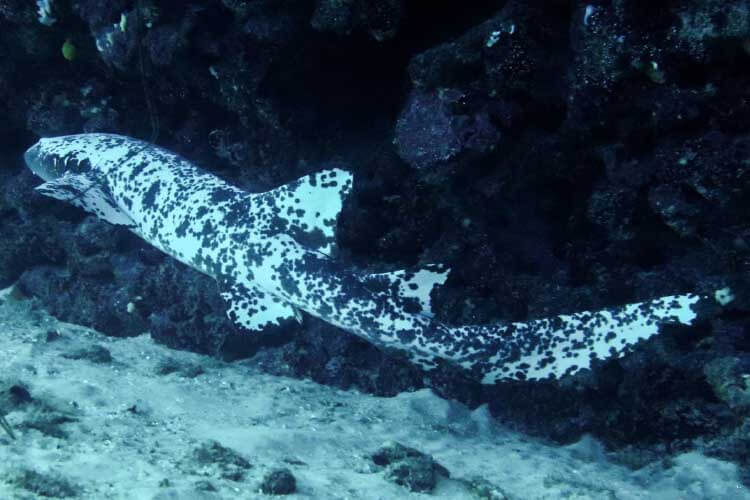
A new study has documented the first recorded case of the rare pigmentation disorder xanthism in a gold-coloured shark caught by fishers off the coast of Costa Rica.
The 2-metre-long nurse shark (Ginglymostoma cirratum) – which is normally a brown colour – was caught in 2024 near Costa Rica’s Tortuguero National Park during a sport fishing competition held by Parismina Domus Dei.
The shark was also found to have white eyes, which is common in albino fish, indicating it suffered from a condition known as albino-xanthochromism.
Xanthism is a rare pigmentation disorder which causes an excess of yellow pigment in an animal’s skin, fur or scales.
While the condition has previously been documented in fish species, the golden nurse shark is the first documented example of xanthism in chondricthytes – cartilaginous fish – which includes sharks, rays, skates and chimaeras.
It is not the first time a nurse shark has been spotted with a pigmentation disorder, however. In 2022, a nurse shark with piebaldism, in which part of the skin’s pigment is missing giving the animal a dappled or spotted appearance, was spotted in the waters of Utila, Honduras.
The report’s authors also cite a 2018 paper documenting the 2017 discovery of a Homelyn Ray (Raja mantagui) in the Irish Sea.
Conditions such as xanthism and albinism remove an animal’s natural skin colour and, therefore, its camouflage, potentially leaving an affected creature at an extreme survival disadvantage, as it may be much more visible to both its predators and prey.
The size of the Costa Rican nurse shark however, clearly a well-fed adult, indicates that it hasn’t suffered unduly as a result of its skin colouration.

This may be explained as nurse sharks are opportunistic benthic feeders with a fairly non-specific diet, which includes small fish and rays, octopus, squid, crab, lobsters and shrimp.
They generally feed at night, sucking their prey from the sand and crevices with a suction force considered to be one of the strongest of all aquatic vertebrates, powerful enough to pull some of their prey items apart before consumption.
The condition is so rare and so little is known about its effect underwater, it’s entirely possible that xanthism may in some way be beneficial.
Fully-grown adult nurse sharks have few predators in their natural environment, with the exception of tiger sharks and – occasionally – crocodiles and alligators in some coastal waters.
Younger sharks are much more vulnerable, but perhaps, in the same way that the bright colours of other species serve as a deterrent to predators, the vivid yellow skin of this particular nurse shark kept it from being eaten as a juvenile.
As the first scientifically documented case of xanthism in nurse sharks, the significance of the condition raises important biological and genetic questions to which scientists, as yet, have no answers – proving yet again how little we know about life just a few metres under the water.


